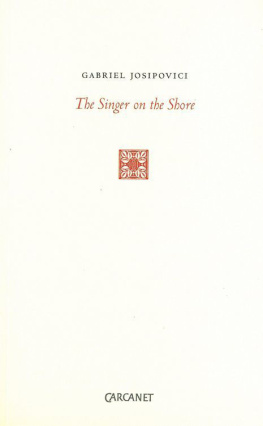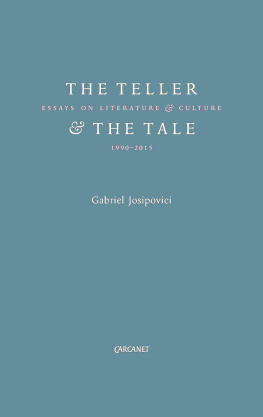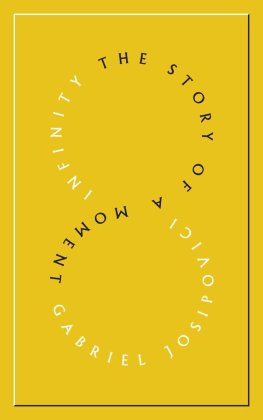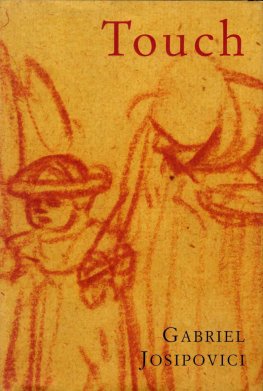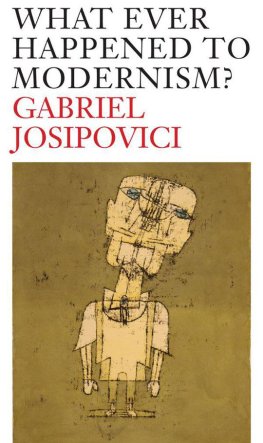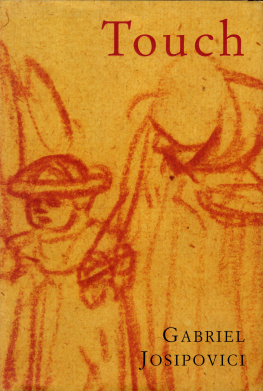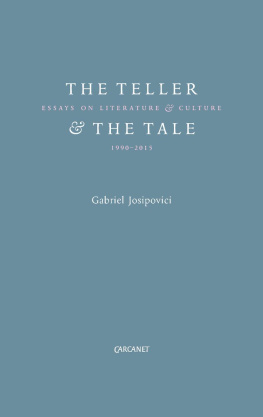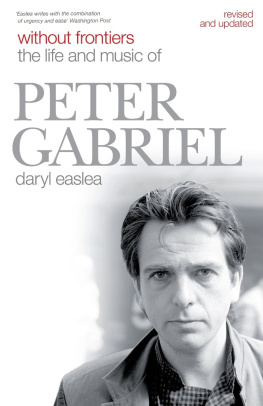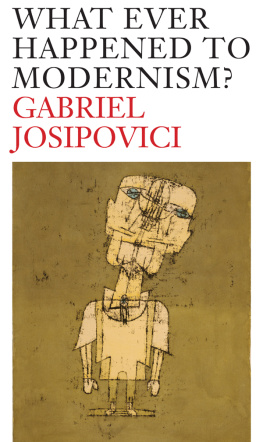Gabriel Josipovici - The Singer on the Shore: Essays 1991-2004
Here you can read online Gabriel Josipovici - The Singer on the Shore: Essays 1991-2004 full text of the book (entire story) in english for free. Download pdf and epub, get meaning, cover and reviews about this ebook. year: 2006, publisher: Carcanet, genre: Religion. Description of the work, (preface) as well as reviews are available. Best literature library LitArk.com created for fans of good reading and offers a wide selection of genres:
Romance novel
Science fiction
Adventure
Detective
Science
History
Home and family
Prose
Art
Politics
Computer
Non-fiction
Religion
Business
Children
Humor
Choose a favorite category and find really read worthwhile books. Enjoy immersion in the world of imagination, feel the emotions of the characters or learn something new for yourself, make an fascinating discovery.
- Book:The Singer on the Shore: Essays 1991-2004
- Author:
- Publisher:Carcanet
- Genre:
- Year:2006
- Rating:4 / 5
- Favourites:Add to favourites
- Your mark:
- 80
- 1
- 2
- 3
- 4
- 5
The Singer on the Shore: Essays 1991-2004: summary, description and annotation
We offer to read an annotation, description, summary or preface (depends on what the author of the book "The Singer on the Shore: Essays 1991-2004" wrote himself). If you haven't found the necessary information about the book — write in the comments, we will try to find it.
The Singer on the Shore: Essays 1991-2004 — read online for free the complete book (whole text) full work
Below is the text of the book, divided by pages. System saving the place of the last page read, allows you to conveniently read the book "The Singer on the Shore: Essays 1991-2004" online for free, without having to search again every time where you left off. Put a bookmark, and you can go to the page where you finished reading at any time.
Font size:
Interval:
Bookmark:
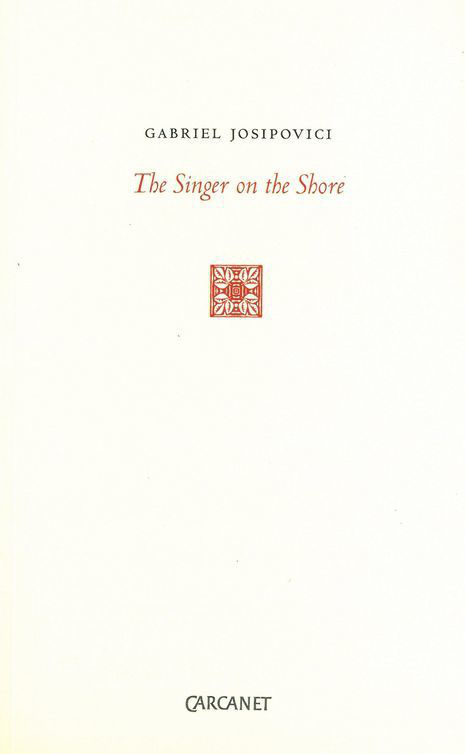

GABRIEL JOSIPOVICI
The Singer on the Shore
ESSAYS 19912004

For Dick and Ally
&
For Ornan and Num
Plates 15 will be found between pp.102 and 103; Plates 69 between pp.262 and 263.
T
HE ESSAYS COLLECTED HERE
were nearly all written in response to specific requests: by publishers to write introductions to works they knew I admired; by editors to contribute to volumes on specific themes in which they thought I might be interested; by institutions inviting me to lecture. I like the idea of miscellaneous collections and enjoy reading those of writers I admire: a whole book on one topic can have a somewhat wilful feel to it, whereas an essay is never wilful, and it is (or should be) what Montaigne understood it as: an essai, an attempt, which should retain its transient and momentary quality: this is how it seems to me, now (and I may feel differently next year).
At the same time a volume of such essais will, one hopes, add up to more than the sum of its parts, will convey to the reader that secret signature which Proust rightly held to be what we most treasure in art, and which cannot be found in any one passage but rather emerges between the different essais of any artist, be they pieces of music, sketches and paintings, books or essays proper. No artist, should, however, attempt to sum up what that secret signature is, just as no person should try to be what he or she thinks they really are that is the recipe for self-parody, a topic I deal with in The Singer on the Shore.
For that reason I have resisted tinkering with the texts (except occasionally to correct a mistake of fact or an obvious clumsiness of style). This means that I have left those essays delivered as lectures in the lecture format, and resisted the temptation to remove the occasion of their delivery; and it means, inevitably, that there is some repetition, since ones repertoire of examples is naturally limited. To try and eliminate this, however, would have meant producing a quite different kind of book, and I feel that more would have been lost than gained.
At the same time, finding the same issues dealt with in different contexts may help the reader understand them better. I am thinking, for example, of the discussion of contingency in The Bible Open and Closed and in the essay on Borges, or of patience in the essay on Twelfth Night and in that on some recent paintings by Andrzej Jackowski. I also rather like the idea of returning to the same issues in slightly different ways, as happens in Dejection and in both the essay on Borges and the one on Kierkegaard and the Novel. It suggests that the critic, unlike the scholar, is not putting forward a thesis or delivering a truth, but is more like the artist, struggling to articulate something which is difficult to put into words, something which, as Eliot says in Four Quartets, is lost and found and lost again, and which reveals the critical enterprise as a journey on which critic and reader embark together, not as a terrain to be mapped by a specialist in the field.
The essays that follow are not, of course, the only writing I did between 1991 and 2004, and not even the main form of writing; but I put as much into each one as I did into the novels, short stories and books I wrote in that time, and one or two of them seem to me more successful (in the sense that I got closer to what I wanted to say) than the more extended pieces of work.
One final point: the concluding essay was delivered as my inaugural lecture as Professor of English at the University of Sussex, where I spent my professional life. I hesitated to include it in my previous volume of essays, Text and Voice: Essays 19811991, feeling that it was too personal. It seeemed to fit in better this time, so I have included it, though it was delivered in March 1986.
Gabriel Josipovici
Lewes, 1 January 2005
T
HE
B
IBLE
IS FROM FIRST TO LAST
from In the beginning God created the heaven and the earth to Cyruss decree ordering the exiles to return to Jerusalem, from Matthews genealogy to the end of Revelation a series of narratives, perhaps a single narrative made up of many pieces. Narrative was clearly how these ancient Semitic peoples made sense of the world, as it was the way the Greeks of the time of Homer, and so-called primitive peoples all over the world did. Yet we in our culture have a problem with narrative. What does it mean? we ask. What is the guy trying to say? And if the book in question is a sacred text the problems grow even more acute. For then it is even more important to understand clearly what it is saying, since our very lives may depend upon it. We need to feel we are dealing with a text that is closed, in the sense that its meaning can be clearly understood and translated into other terms; yet the Bible, like all narratives, but, as I hope to show, even more than most, is open, that is, it resists translation into other terms and asks not so much to be understood as lived with, however puzzling and ambiguous it may seem.
Let me try to flesh out this rather stark opposition between open and closed by giving you some examples of what I have in mind. I will confine myself for the moment to the Hebrew Bible, what Christians call the Old Testament. Rather than arguing this point in general terms, let me take you straight to some specific examples of what I mean. When it becomes clear that David has become a rebel leader and will not be persuaded to return to court, Saul gives his daughter Michal, who had been Davids wife, to a certain Phalti, the son of Laish (1 Sam. 25:44). We hear nothing more of this man, who had not previously been mentioned, until after the death of Saul and his son Jonathan, when Abner, the commander of Sauls army, makes peace overtures to David, now king in Hebron. David, however, is only prepared to listen if Abner hands over Michal. This is of course no romantic tale of lovers re-united; Michal stands for the Saulide succession, as Ishbosheth, Sauls sole surviving son, now clinging to the kingship of Israel, and Abner and David well know. But since the power now rests with David, there is nothing Ishbosheth can do about it:
And Ishbosheth sent, and took her from her husband, even from Phaltiel the son of Laish. And her husband went with her along weeping behind her to Bahurim. Then said Abner unto him, Go, return. And he returned. (2 Sam. 3:1516).
We never hear of this Phalti or Phaltiel again. He is a mere pawn in the game being played out between Saul and David and David and Sauls descendants, only one tiny cog in the chain of history unfolding in the Hebrew Bible, the history of Gods relations with Israel. It would have been perfectly easy for the narrator to say: And David took again his wife Michal, daughter of Saul, which Saul had given to Phalti, the son of Laish. But no. He chooses instead to bring this man momentarily to life, to make his pain, whether wounded pride or anguished love, all the more palpable for remaining unspoken. And then he makes him disappear: Then said Abner to him, Go, return. And he returned.
What are we to make of this? What, we ask, is this silent Phaltis role in the history of Israels relations with God? How much importance, if any, are we to allot to him? We might let these questions pass in a novel (though we can be sure that if this novel becomes the object of academic study they will sooner or later be raised), but in a sacred text like the Bible the lack of an answer is deeply troubling, so troubling that someone at some point will seek to provide answers to them. I dont wish to engage with this issue at the moment, but want instead to pass on to another example. Chapter 38 of Genesis concerns Judah and his daughter-in-law Tamar. He gives her one of his sons, who dies shortly after, then a second son, who also dies. Anxious to protect the life of his youngest son, he withholds him from Tamar, although he should by rights now let him marry her. She, however, dresses up as a temple prostitute and accosts Judah as he passes on his way to the sheep-shearing. The encounter leads to her becoming pregnant, and, when her father-in-law arraigns her before the court, she turns the tables on him and proves that he is the father. Once this is made clear Judah does not try to hide: She is in the right and I am not; because that I gave her not to Shelah my son. And he knew her again no more(38:26). However, she bears him twins, Pharez and Zarah, and with their birth the chapter ends and we return once again to the story of Judahs younger brother, Joseph. In Chapter 46 we read that among those who went down with Jacob to Egypt were the sons of Judah, Shelah and Pharez, and the sons of Pharez, Hezron and Hamul. Much later, in Numbers, we learn that the Pharzites, the Serahites, the Hezronites and the Hamulites are still going strong (26:2021). Then in the Book of Ruth we learn that Boaz, whose own son, Jesse, is the father of David, is himself a descendent of Pharez. Finally, at the start of the New Testament Matthew tells us that Judas begat Pharez and Sara of Thamar; and Pharez begat Esrom and Obed begat Jesse; and Jesse begat David the king; and David begat Solomon and Jacob begat Joseph the husband of Mary, of whom was born Jesus, who is called Christ (Mat. 1:116).
Font size:
Interval:
Bookmark:
Similar books «The Singer on the Shore: Essays 1991-2004»
Look at similar books to The Singer on the Shore: Essays 1991-2004. We have selected literature similar in name and meaning in the hope of providing readers with more options to find new, interesting, not yet read works.
Discussion, reviews of the book The Singer on the Shore: Essays 1991-2004 and just readers' own opinions. Leave your comments, write what you think about the work, its meaning or the main characters. Specify what exactly you liked and what you didn't like, and why you think so.

